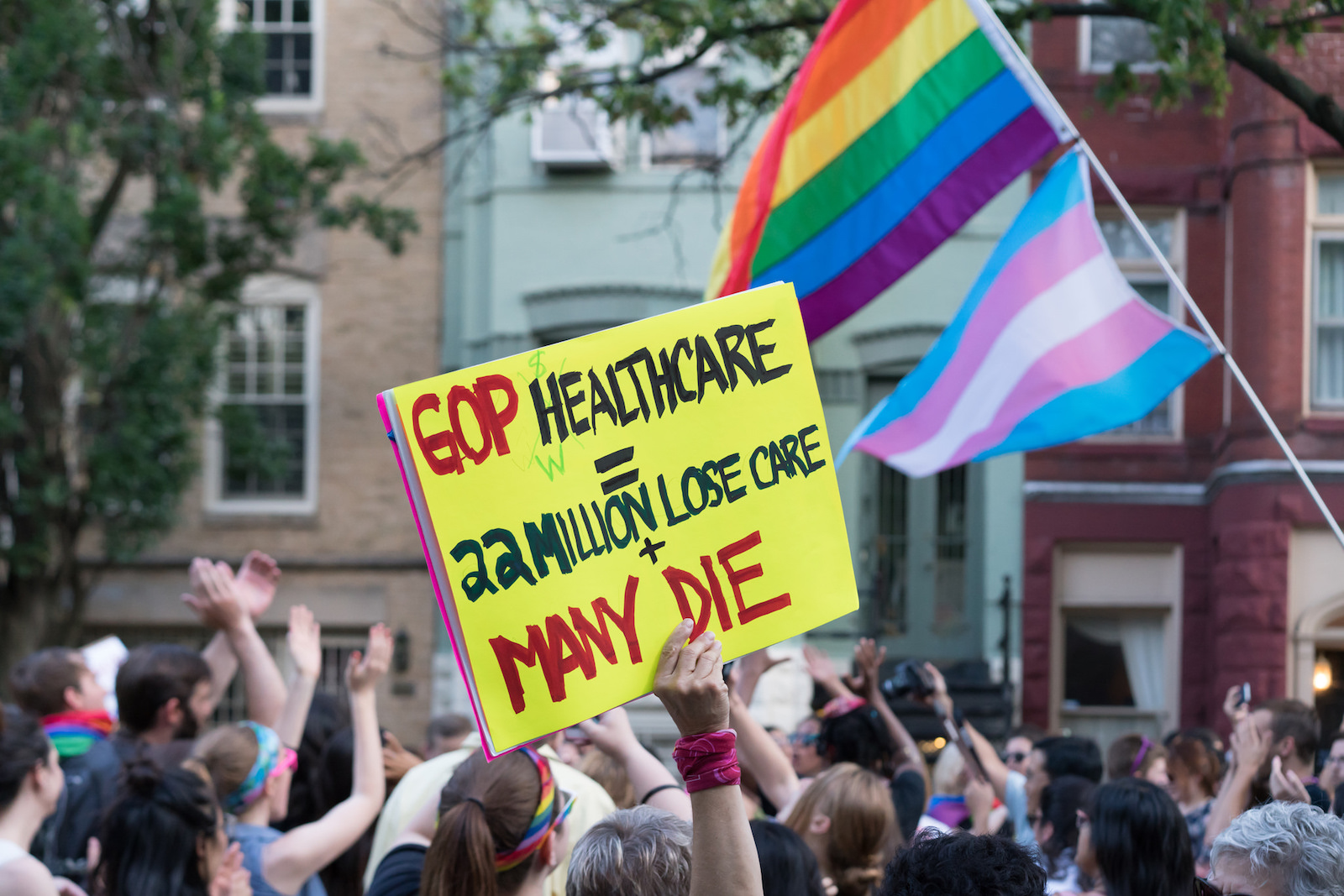The Local newsletter is your free, daily guide to life in Colorado. For locals, by locals.
Last Thursday, Republicans in the U.S. Senate released their repeal-and-replace health care legislation, the Better Care Reconciliation Act of 2017 (BCRA). The bill, much like the U.S. House of Representatives’ plan—the American Health Care Act of 2017 (AHCA)—changes both the structure of the Affordable Care Act’s subsidies for low-income people without employer-sponsored insurance and dramatically alters the structure of the Medicaid program.
Those changes would have big effects on millions of Americans and the health-care marketplace. On Monday, the Congressional Budget Office (CBO) published its analysis of how the legislation would affect insurance coverage rates, costs, and federal spending. According to the CBO’s projections, if the law is passed, 22 million fewer people will have insurance in 2026 than if the ACA remains in place.

The new bill would also impact hundreds of thousands of residents in the state of Colorado, which expanded Medicaid to cover an additional 400,000 Coloradans under the ACA and generally embraced Obamacare. “The CBO score solidifies what we already knew,” said the office of Gov. John Hickenlooper in an emailed statement to 5280. “Hundreds of thousands of Coloradans—and millions across the country—will lose health care coverage if this bill passes. If this bill is signed into law, Coloradans will face higher costs and less coverage, particularly older Coloradans and those in rural communities across our state. This bill takes us backward. We continue to urge Senators [Michael] Bennet and [Cory] Gardner to vote against it.”
The CBO score prompted several Republican senators to speak out against the legislation this week, forcing the GOP leadership to delay their planned vote until after the July 4th recess (they resume business on Monday, July 10). The bill is not dead. If the BCRA does become law, here are four ways it would affect Colorado:
The State’s Uninsured Population Would Swell
The estimates here vary, but the state’s uninsured residents would likely increase significantly. The Center for American Progress, a liberal think tank, predicts that, by 2026, 188,500 fewer Coloradans would be enrolled in Medicaid, and 51,600 fewer would have coverage in the individual insurance markets. The Colorado Health Institute (CHI), a nonpartisan policy research organization, puts the long-term numbers for Medicaid much higher, estimating that, by 2030, about 628,000 fewer Coloradans would be covered by Medicaid under the BCRA than under Obamacare.
Colorado Will Have to Make Some Difficult Choices About Medicaid in the Long-Run
In addition to rolling back the Medicaid expansion, the BCRA changes the manner in which the federal government funds the program. In fact, the long-term cuts in federal funding are actually deeper than those proposed in the House bill. CHI projects the state will see $15 billion less in federal funding by 2030. These cuts will force lawmakers to make some difficult choices about the program, which currently spends 60 percent of its budget on services for children, the disabled, and the elderly.
“What Colorado would have to do, after a few years of this lower funding, is decide how we’re going to deal with it,” says Joe Hanel, manager of public policy outreach at CHI. “These changes have real-world effects for people who really don’t have a whole lot of other places to go—kids, people with disabilities, elderly people in nursing homes. This is not a population with lots of choices.”
Some Coloradans Would Pay Lower Premiums, Others Would Pay (Much) Higher Premiums
Like the ACA, the BCRA would provide premium subsidies to low-income Americans that are benchmarked to income, age, and local insurance costs. The subsidies in the BCRA, however, are benchmarked to less-generous plans, targeted more heavily at younger Americans, and capped at 350 percent of the poverty line (as opposed to 400 percent under the ACA). As a result, some Coloradans, particularly younger residents, would enjoy lower premiums, while others could face higher premiums. According to data from a new Henry J. Kaiser Family Foundation analysis, a 27-year-old living in Fort Collins and earning $30,000 a year, for example, would pay about $2,280 per year (after the tax credit) for a silver-level plan under the BCRA, as compared to $2,480 under the ACA. By contrast, a 60-year-old earning $42,000 a year and living in Grand Junction would see their after-tax credit premiums increase from $4,480 to $20,050 a year.
But Out of Pocket Spending Would Go Up Across the Board
The CBO projects, however, that most people in the nongroup markets—people who don’t get insurance through an employer or the government—will see higher deductibles and increases in out-of-pocket health-care spending due to both the eventual elimination of the ACA’s cost-sharing subsidies and the less-generous benchmark plans under the BCRA.
It Could Make It Harder to Fight the Opioid Epidemic
Medicaid is an outsize contributor to drug addiction treatment—according to CHI, 30 percent of people who died of drug overdoses in 2015 in Colorado were Medicaid enrollees. Advocates fear that the BCRA’s cuts to Medicaid could make it harder for the state to fight its opioid epidemic. The bill sets aside only $2 billion for opioid treatment, far less than the $45 billion that two Republican Senators—Sen. Rob Portman of Ohio and Sen. Shelley Moore Capito of West Virginia—had requested or the $190 billion that experts say is actually needed, leaving limited options for those who are struggling with addiction.








